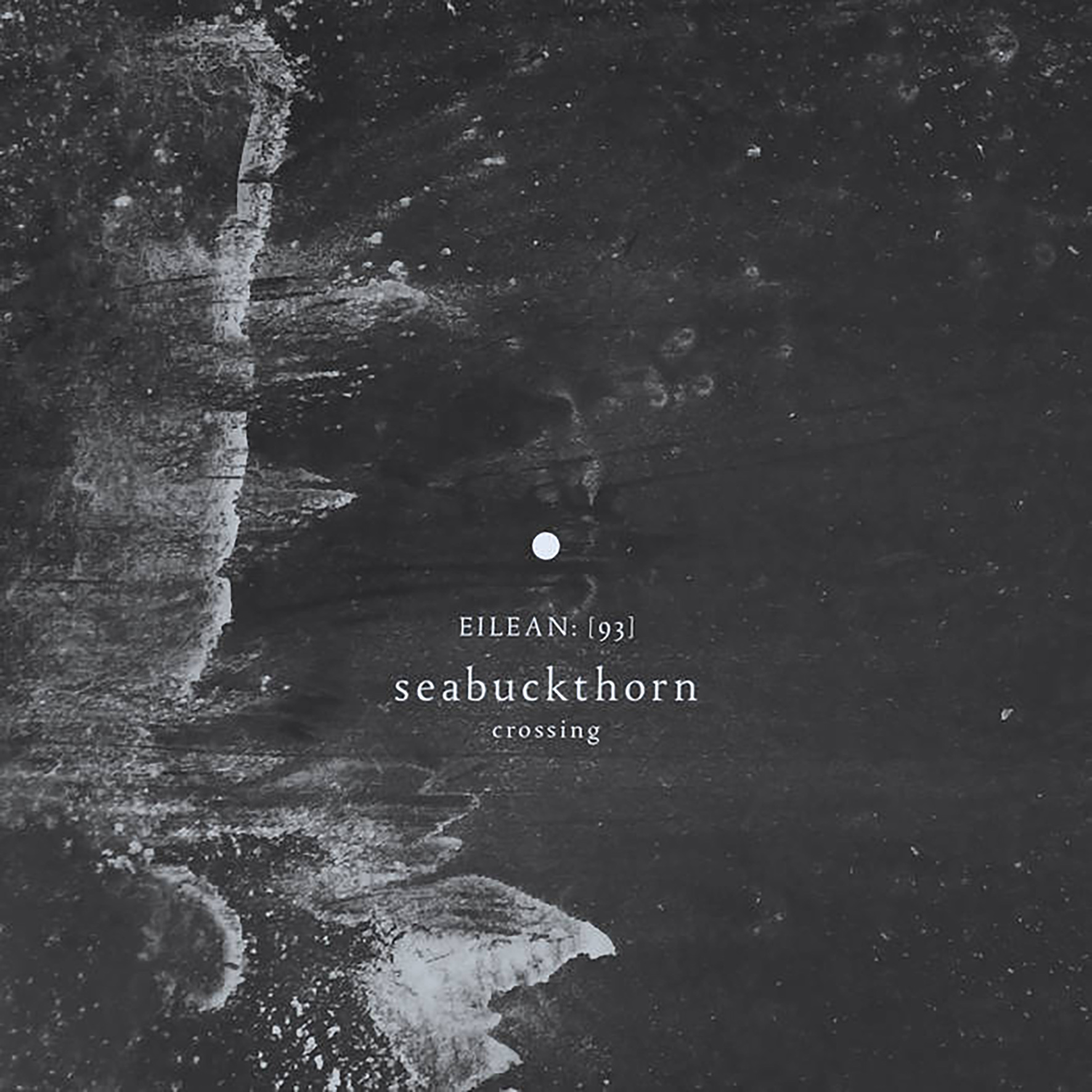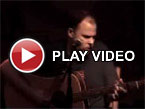Seabuckthorn, "Crossing"
 English guitarist Andy Cartwright's A House With Too Much Fire was one of the most striking and underappreciated albums of 2018, beautifully evoking a timeless and haunted-sounding strain of Americana. For his follow-up, the expectant father arguably allows a bit more light to creep into his vision, but plunges still deeper into the more experimental and atmospheric tendencies that made Too Much Fire so wonderful. In fact, Crossing sheds many of the more overt folk trappings of its predecessor, largely replacing the banjos and acoustic guitars with drones from a bowed resonator guitar (though the "Haunted Americana" sensibility remains very firmly in place). Despite its strong emphasis on mood and sustained tones, it would be a mistake to characterize Crossing as anything like a conventional drone album though, as Cartwright's closest kindred spirit at this stage of his career seems to be Richard Skelton. It does not quite resemble the actual Richard Skelton though–instead Crossing often approximates an alternate Skelton who veered towards increasingly warm, intimate, and bittersweet soundscapes rather than embracing the deeper themes and elemental power of the natural world. I certainly have ample room in my heart for both directions, especially when executed this masterfully.
English guitarist Andy Cartwright's A House With Too Much Fire was one of the most striking and underappreciated albums of 2018, beautifully evoking a timeless and haunted-sounding strain of Americana. For his follow-up, the expectant father arguably allows a bit more light to creep into his vision, but plunges still deeper into the more experimental and atmospheric tendencies that made Too Much Fire so wonderful. In fact, Crossing sheds many of the more overt folk trappings of its predecessor, largely replacing the banjos and acoustic guitars with drones from a bowed resonator guitar (though the "Haunted Americana" sensibility remains very firmly in place). Despite its strong emphasis on mood and sustained tones, it would be a mistake to characterize Crossing as anything like a conventional drone album though, as Cartwright's closest kindred spirit at this stage of his career seems to be Richard Skelton. It does not quite resemble the actual Richard Skelton though–instead Crossing often approximates an alternate Skelton who veered towards increasingly warm, intimate, and bittersweet soundscapes rather than embracing the deeper themes and elemental power of the natural world. I certainly have ample room in my heart for both directions, especially when executed this masterfully.
I was pleasantly amazed when I first learned that Crossing was primarily composed for guitar (albeit an unconventionally played one), as the opening title piece feels very convincingly like the work of a full string quartet.I knew that it was possible to approximate a violin with a bowed guitar, but Cartwright somehow manages to conjure up the richly woody and rattling moans of a double bass as well.That textural wizardry and attentive devotion to sound design is a large part of what makes Seabuckthorn such a compelling project these days, as Cartwright is a master at finding the perfect balance between the ghostly and the visceral.Moreover, he applies those production talents to a distinctive, immersive, and bleakly beautiful vision.For me, that vision evokes clouds slowly rolling across the horizon of a desolate prairie in the 1800s.Consequently, I was also surprised to find that Crossing was composed in the French Alps, as it genuinely feels like it was dreamed up on the back porch of a ramshackle cabin in Joshua Tree by a grizzled hermit plagued by religious visions.That sense of stark, lonely beauty pervades much of the album and provides its ostensible center, as the darkly churning strings of the opener are reprised for two more movements of a "Crossing" trilogy (as well as the brooding coda of the closing "Crossed").Along the way, however, the clouds occasionally part to reveal some gorgeously sublime oases of flickering light and deep emotion.Those moments are where Crossing shines the brightest.
By my count, there are three absolute stunners among Crossing's fourteen songs: "To Which the Rest Were Dreamt," "The After Quiet," and "It Can Ashen."In "The Rest Were Dreamt," pulsing feedback-like harmonics form a slow, tender melody while fading in and out of focus like ghosts."The After Quiet" takes a similarly pulsing approach to melody, but beautifully tweaks the formula by adding a shivering, squealing, and undulating layer of bowed strings.On "It Can Ashen," on the other hand, a sleepily lovely clarinet melody endlessly repeats like an enigmatic bird song over a densely churning bed of heavy drones.There is also a second tier of excellent pieces that are quite striking as well, such as "The Cloud and the Redness," which nicely embellishes its slow-moving drones with vibrantly squeaking and squirming bowed strings that slice through the ambient haze.The mournful, banjo-driven "Cleanse" is yet another wonderful piece, though it is a bit of an outlier that returns to the territory of A House With Too Much Fire.To my ears, its slow-motion, rustic country blues is a dark horse candidate for Crossing's most inspired and revelatory piece, even if it is not the album's strongest composition.It feels like God himself had a bit too much whiskey, got all melancholy, and decided to play some sad bottleneck slide guitar on his porch.The playing itself is not particularly god-like, but the scale certainly feels like it, as Cartwright's sliding chords feel glacial and immense in a way that is not human.It is both weirdly meditative and eerily hallucinatory and it resembles nothing else that I have ever heard.
Even though some of the most achingly gorgeous moments on A House With Too Much Fire were the more abstract ones, I did not expect Cartwright as far away from the virtuosic fingerpicking of his early work as he does with this release.He is a hell of a gifted guitarist, yet anyone who encounters Seabuckthorn for the first time with Crossing could certainly be forgiven for not realizing that there were guitars on it.I suppose that makes Crossing a culminating achievement of sorts, as Cartwright has now definitively transformed from a guitarist with a flair for the cinematic into a gifted composer who is chasing a sublime and hauntingly impressionist vision (and succeeding).In that regard, Cartwright continues to roughly mirror the trajectory of his former label mate William Ryan Fritch: both are talented multi-instrumentalists increasingly in demand for film scores and both have a pronounced fondness for a evoking a mythic American West. Their sole major divergence is that Fritch is far more prolific and stylistically varied (and that he makes it seem effortless).Cartwright, on the other hand, seems like the sort of artist who will spend years devotedly straining to attain the one vision that obsesses him.In both cases, the end result is the same: plenty of excellent music and an occasional glimpse of almost unearthly beauty.When Cartwright is at his best (as he sometimes is here), it feels like he is on an entirely different plane than most other composers.I am not sure if Crossing necessarily surpasses Too Much Fire or merely maintains the same level of greatness, but it does not matter: both albums fitfully capture an incandescent brilliance that can rarely be found elsewhere.
Samples can be found here.



